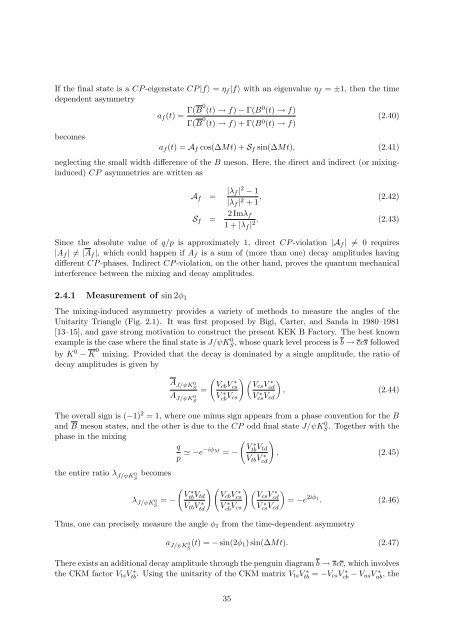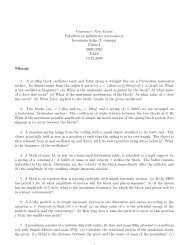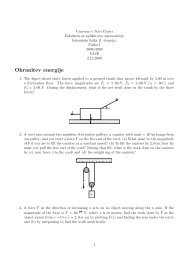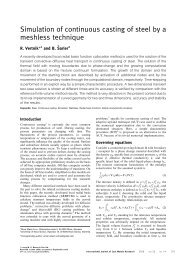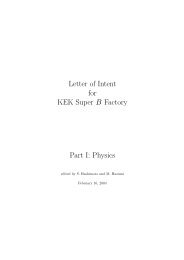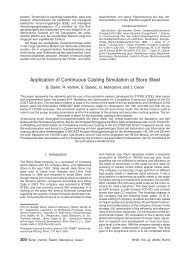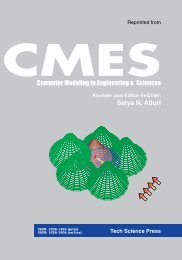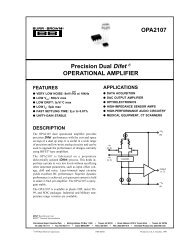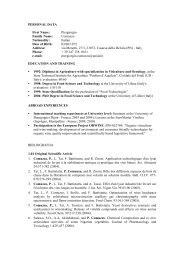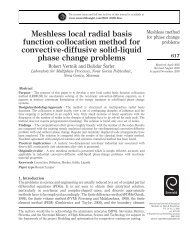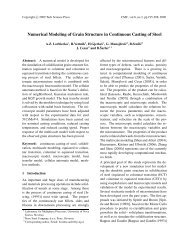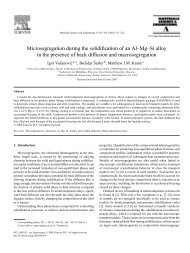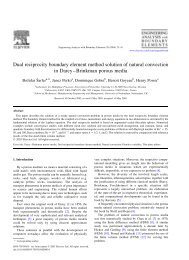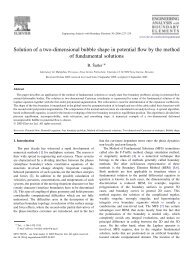Letter of Intent for KEK Super B Factory Part I: Physics
Letter of Intent for KEK Super B Factory Part I: Physics
Letter of Intent for KEK Super B Factory Part I: Physics
Create successful ePaper yourself
Turn your PDF publications into a flip-book with our unique Google optimized e-Paper software.
If the final state is a CP -eigenstate CP |f〉 = ηf |f〉 with an eigenvalue ηf = ±1, then the time<br />
dependent asymmetry<br />
becomes<br />
af (t) = Γ(B0 (t) → f) − Γ(B 0 (t) → f)<br />
Γ(B 0 (t) → f) + Γ(B 0 (t) → f)<br />
(2.40)<br />
af (t) = Af cos(∆Mt) + Sf sin(∆Mt), (2.41)<br />
neglecting the small width difference <strong>of</strong> the B meson. Here, the direct and indirect (or mixinginduced)<br />
CP asymmetries are written as<br />
Af = |λf | 2 − 1<br />
|λf | 2 , (2.42)<br />
+ 1<br />
Sf =<br />
2 Imλf<br />
. (2.43)<br />
1 + |λf | 2<br />
Since the absolute value <strong>of</strong> q/p is approximately 1, direct CP -violation |Af | = 0 requires<br />
|Af | = |Af |, which could happen if Af is a sum <strong>of</strong> (more than one) decay amplitudes having<br />
different CP -phases. Indirect CP -violation, on the other hand, proves the quantum mechanical<br />
interference between the mixing and decay amplitudes.<br />
2.4.1 Measurement <strong>of</strong> sin 2φ1<br />
The mixing-induced asymmetry provides a variety <strong>of</strong> methods to measure the angles <strong>of</strong> the<br />
Unitarity Triangle (Fig. 2.1). It was first proposed by Bigi, Carter, and Sanda in 1980–1981<br />
[13–15], and gave strong motivation to construct the present <strong>KEK</strong> B <strong>Factory</strong>. The best known<br />
example is the case where the final state is J/ψK0 S , whose quark level process is b → ccs followed<br />
by K0 − K 0 mixing. Provided that the decay is dominated by a single amplitude, the ratio <strong>of</strong><br />
decay amplitudes is given by<br />
A J/ψK 0 S<br />
A J/ψK 0 S<br />
=<br />
VcbV ∗<br />
cs<br />
V ∗<br />
cb Vcs<br />
VcsV ∗<br />
cd<br />
V ∗<br />
csVcd<br />
<br />
, (2.44)<br />
The overall sign is (−1) 2 = 1, where one minus sign appears from a phase convention <strong>for</strong> the B<br />
and B meson states, and the other is due to the CP odd final state J/ψK0 S . Together with the<br />
phase in the mixing<br />
q<br />
p −e−iφM <br />
V ∗<br />
tbVtd = −<br />
VtbV ∗<br />
<br />
, (2.45)<br />
cd<br />
the entire ratio λ J/ψK 0 S becomes<br />
<br />
V ∗<br />
tbVtd λJ/ψK0 = −<br />
S VtbV ∗<br />
<br />
VcbV<br />
td<br />
∗<br />
cs<br />
V ∗<br />
cbVcs VcsV ∗<br />
cd<br />
V ∗<br />
<br />
csVcd<br />
= −e 2iφ1 . (2.46)<br />
Thus, one can precisely measure the angle φ1 from the time-dependent asymmetry<br />
a J/ψK 0 S (t) = − sin(2φ1) sin(∆Mt). (2.47)<br />
There exists an additional decay amplitude through the penguin diagram b → scc, which involves<br />
. Using the unitarity <strong>of</strong> the CKM matrix VtsV<br />
∗<br />
, the<br />
the CKM factor VtsV ∗<br />
tb<br />
35<br />
tb<br />
= −VcsV ∗<br />
cb − VusV ∗ ub


